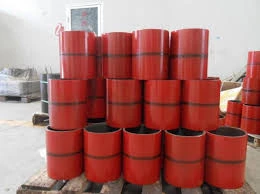- Afrikaans
- Albanian
- Amharic
- Arabic
- Armenian
- Azerbaijani
- Basque
- Belarusian
- Bengali
- Bosnian
- Bulgarian
- Catalan
- Cebuano
- Corsican
- Croatian
- Czech
- Danish
- Dutch
- English
- Esperanto
- Estonian
- Finnish
- French
- Frisian
- Galician
- Georgian
- German
- Greek
- Gujarati
- Haitian Creole
- hausa
- hawaiian
- Hebrew
- Hindi
- Miao
- Hungarian
- Icelandic
- igbo
- Indonesian
- irish
- Italian
- Japanese
- Javanese
- Kannada
- kazakh
- Khmer
- Rwandese
- Korean
- Kurdish
- Kyrgyz
- Lao
- Latin
- Latvian
- Lithuanian
- Luxembourgish
- Macedonian
- Malgashi
- Malay
- Malayalam
- Maltese
- Maori
- Marathi
- Mongolian
- Myanmar
- Nepali
- Norwegian
- Norwegian
- Occitan
- Pashto
- Persian
- Polish
- Portuguese
- Punjabi
- Romanian
- Russian
- Samoan
- Scottish Gaelic
- Serbian
- Sesotho
- Shona
- Sindhi
- Sinhala
- Slovak
- Slovenian
- Somali
- Spanish
- Sundanese
- Swahili
- Swedish
- Tagalog
- Tajik
- Tamil
- Tatar
- Telugu
- Thai
- Turkish
- Turkmen
- Ukrainian
- Urdu
- Uighur
- Uzbek
- Vietnamese
- Welsh
- Bantu
- Yiddish
- Yoruba
- Zulu
Well Casing Extension Coupling for Enhanced Oil and Gas Well Performance Optimization
Understanding Well Casing Extension Coupling A Comprehensive Guide
In the oil and gas industry, well casing is a critical component of the drilling process. It serves multiple purposes, including providing structural support to the wellbore, preventing the collapse of the formation, and isolating fluid zones to avoid contamination. One of the key elements related to well casing is the coupling, specifically the well casing extension coupling. This article explores the importance, types, and applications of well casing extension couplings in modern drilling operations.
What is Well Casing?
Well casing refers to the steel pipe installed in a drilled well to stabilize the structure and protect the surrounding environment. It is typically classified into several types based on the depth and purpose of the well, including surface casing, intermediate casing, and production casing. Each type of casing plays a specific role in ensuring the integrity of the well, from the surface down to the target reservoir.
The Role of Couplings
Couplings are crucial components that connect individual lengths of casing. They ensure a secure and leak-proof connection, allowing the casing to reach greater depths and withstand various stresses encountered during drilling operations. There are different types of couplings available, including threaded, welded, and flush joint couplings, each designed for specific applications and conditions.
What is a Well Casing Extension Coupling?
A well casing extension coupling is a specialized type of coupling designed to extend the length of casing in the borehole without compromising structural integrity
. These couplings are particularly useful when operators need to deepen a well, such as in situations where additional reservoir targets have been identified, or existing wells experience operational challenges that require extension.Extension couplings provide not only the necessary structural support but also aid in maintaining pressure integrity within the wellbore. This is vital to prevent the movement of unwanted fluids and gases, which can lead to blowouts or other hazardous situations.
Benefits of Well Casing Extension Couplings
well casing extension coupling

1. Enhanced Structural Integrity Well casing extension couplings are designed to withstand the rigors of downhole conditions. They offer a high level of resistance against bending, compression, and other mechanical stresses.
2. Cost-Effectiveness Extending a well using couplings can be more economical than drilling a new well. This is especially beneficial in mature fields where existing infrastructure can be leveraged for additional production.
3. Versatility These couplings can be used in various types of wells, including vertical, horizontal, and directional drilling applications. Their flexibility allows operators to tailor their strategies to the specific geological and operational contexts.
4. Reduced Downtime By enabling quick and efficient extension of existing casing, extension couplings can help minimize operational downtime, thereby maximizing productivity.
Challenges and Considerations
While well casing extension couplings offer numerous advantages, there are also challenges that operators must navigate. These include the need for precise engineering to ensure proper fit and alignment, as well as challenges related to corrosion resistance and material fatigue. Choosing the right materials, coatings, and coupling designs is essential to ensure longevity and performance under varying downhole conditions.
Additionally, operators need to conduct thorough analysis and testing before installation to ensure that extension couplings will function effectively within the specific well environment. This includes assessing factors such as temperature, pressure, and chemical exposure, which can significantly impact the lifespan and integrity of the coupling.
Conclusion
Well casing extension couplings play a vital role in modern drilling operations, providing the necessary support and flexibility needed to optimize production from existing wells. As the industry continues to evolve, the development of innovative coupling technologies will remain essential for enhancing efficiency and safety in drilling operations. By understanding the significance of these couplings, operators can make informed decisions that ultimately lead to improved performance in oil and gas extraction.
-
Tubing Pup Joints: Essential Components for Oil and Gas OperationsNewsJul.10,2025
-
Pup Joints: Essential Components for Reliable Drilling OperationsNewsJul.10,2025
-
Pipe Couplings: Connecting Your World EfficientlyNewsJul.10,2025
-
Mastering Oilfield Operations with Quality Tubing and CasingNewsJul.10,2025
-
High-Quality Casing Couplings for Every NeedNewsJul.10,2025
-
Boost Your Drilling Efficiency with Premium Crossover Tools & Seating NipplesNewsJul.10,2025







